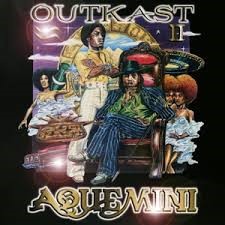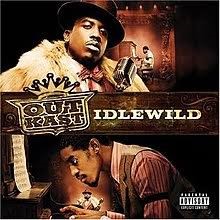Outkast music; An Album Review

Outkast music; An Album Review
Outkast music changed the sound of hip-hop by pushing creative boundaries and redefining Southern rap. Across six distinct studio albums, André 3000 and Big Boi blended funk, soul, jazz, and experimental production with razor-sharp lyricism. From their debut in 1994 to their final release in 2006, Outkast music consistently delivered innovation, cultural impact, and chart success. This blog explores each Outkast album in detail, offering context, themes, and why their discography still resonates today.
Most Asked Questions
Many fans continue to explore Outkast music years after the duo’s last album. Unsurprisingly, questions about their history, style, and legacy remain popular.
Are Outkast still together?
Outkast have not officially broken up, but they have been on an indefinite hiatus since Idlewild in 2006. While both André 3000 and Big Boi have pursued solo projects, no new Outkast music has been released since then. They occasionally reunite for performances, but there are no confirmed plans for a new album.
Why did Outkast go on hiatus?
Creative differences and evolving personal interests played major roles. André 3000 shifted focus to acting and more experimental solo work. Big Boi continued releasing solo albums that kept elements of Outkast music alive. The split wasn't hostile—just a natural progression in their careers.
Who are the members of Outkast?
Outkast consists of André 3000 (André Benjamin) and Big Boi (Antwan Patton). Their distinct styles contributed equally to Outkast music’s impact and evolution.
What is Outkast’s best album?
Many fans and critics consider Aquemini or Stankonia as the best examples of Outkast music. However, some argue Speakerboxxx/The Love Below deserves that title due to its commercial success and Grammy wins.
What does "Stankonia" mean?
“Stankonia” is a word André 3000 created to represent a place of freedom and funk. It symbolizes the creative freedom found in Outkast music during that era.
What does "ATLiens" mean?
A blend of “ATL” (Atlanta) and “aliens,” the title reflects how André and Big Boi saw themselves—outsiders in hip-hop, despite being from the genre’s heartland.
What genre is Outkast?
Outkast music spans hip-hop, funk, soul, jazz, rock, and electronic. Each album mixes genres differently, contributing to their boundary-breaking legacy.
How many albums did Outkast make?
Outkast released six studio albums between 1994 and 2006. Each release marked a clear evolution in their style and artistic vision.
What are Outkast’s biggest hits?
Some of their most popular tracks include “Ms. Jackson,” “Hey Ya!,” “The Way You Move,” “Rosa Parks,” and “B.O.B.” These songs brought Outkast music to global audiences.
Did Outkast apologize to Miss Jackson?
Yes, “Ms. Jackson” was André 3000’s public apology to the mother of Erykah Badu, the mother of his child. The heartfelt lyrics made it one of the most memorable Outkast music moments.
What influenced Outkast’s sound?
Outkast music draws from George Clinton’s funk, Prince’s eclectic style, Atlanta’s Southern roots, and a love for experimentation. Each influence is present across their discography.
Are André 3000 and Big Boi still friends?
Yes. Although they’ve gone their separate creative ways, both have publicly expressed mutual respect and friendship. Their occasional collaborations reflect that ongoing bond.
The Albums
1. Speakerboxxx/The Love Below (2003)

Outkast music reached its commercial peak with Speakerboxxx/The Love Below in 2003. This double album featured two distinct solo efforts—Big Boi’s Speakerboxxx and André 3000’s The Love Below—packaged under the Outkast name. Despite their separate directions, both parts stayed true to the duo’s innovative spirit.
Big Boi’s Speakerboxxx leaned into Southern rap with heavy funk and political undertones. His production choices reflected Outkast music's roots while exploring new layers of soul and bass-driven rhythm. In contrast, André 3000’s The Love Below stepped far from traditional hip-hop. He sang more than rapped, blending jazz, pop, funk, and psychedelic influences. That contrast helped the album feel like two worlds under one vision.
This project became a cultural phenomenon. “Hey Ya!” dominated global charts, while “The Way You Move” proved Big Boi’s commercial pull. The album won the Grammy for Album of the Year, an achievement few rap acts have accomplished.
Outkast music was no longer just for hip-hop fans. This release expanded their reach and showed how far they could stretch genre boundaries. Though some fans wondered if this project signaled a split, both artists insisted it was a celebration of creative freedom. Critics hailed it as bold, daring, and genre-defining.
Ultimately, Speakerboxxx/The Love Below became the highest-certified rap album of all time. Outkast music had evolved into something far larger than anyone expected, crossing genres without losing its identity.
2. Stankonia (2000)

Outkast music took another leap forward with the release of Stankonia in 2000. This fourth studio album expanded their sound and shattered expectations. By blending rap with rock, funk, electronic, and gospel influences, the duo created a genre-defying project that still reflected their Southern roots.
While Aquemini was introspective, Stankonia exploded with energy. Outkast music on this record addressed love, politics, racism, and identity while maintaining their playful edge. Tracks like “Ms. Jackson” and “B.O.B. (Bombs Over Baghdad)” showed their ability to tackle both personal and global themes without losing musical flair.
Big Boi and André 3000 recorded over 30 tracks during the sessions, filtering the best into a sharp and dynamic final product. The album's bold production and lyrical risks paid off. Critics praised its innovation, and fans embraced its unfiltered creativity.
Commercially, it became one of their biggest successes. Stankonia won the Grammy for Best Rap Album and went multi-platinum. Outkast music had officially entered the mainstream without compromising artistic integrity.
Even today, Stankonia remains one of their most influential records. It confirmed their status as creative leaders in hip-hop and paved the way for their next bold move. With this album, Outkast proved that experimental rap could also be commercially successful.
3. Aquemini (1998)

Outkast music reached new creative heights with the release of Aquemini in 1998. The title, a fusion of Big Boi’s Aquarius and André 3000’s Gemini signs, symbolized their differing styles and unified vision. This third studio album blended live instrumentation with a wider musical palette, including funk, soul, gospel, rock, and blues.
From the start, the sound felt richer and more layered. Outkast music here explored personal identity, technology, addiction, and freedom, while staying rooted in their Atlanta experiences. They collaborated with artists like George Clinton and Raekwon, bringing even more variety to the project’s sonic range.
Critics and fans alike hailed Aquemini as a groundbreaking work. It went double platinum and landed on many all-time best album lists. While Big Boi delivered grounded realism, André’s abstract style added a futuristic twist. This creative contrast worked in harmony, giving the album balance and depth.
Despite its ambition, Aquemini stayed cohesive. Outkast music didn’t chase trends—they redefined them. Their confidence and refusal to conform made this record one of the most respected albums in hip-hop history. Each track pushed limits, both musically and lyrically, showing the group’s unmatched versatility and fearlessness.
4. ATLiens (1996)

Outkast music evolved significantly with the release of ATLiens in 1996. This second studio album marked a clear departure from their “playa” origins, embracing a more introspective and experimental approach. Both André 3000 and Big Boi took on more production duties, shaping a sound that leaned into dub, gospel, and spacey atmospheres.
By shifting their focus, the duo explored deeper themes. Outkast music here tackled identity, isolation, fatherhood, and spiritual searching. Big Boi had recently become a father, and that life change influenced the album’s reflective tone. André’s increasingly philosophical and unconventional lyrics set the stage for the group’s artistic growth.
Although different from their debut, the new direction was widely praised. Critics called it bold and innovative. Songs like “Elevators (Me & You)” earned heavy rotation and connected with fans through their honesty and unique sound. Even as they broke away from mainstream expectations, their audience only grew.
Outkast music on ATLiens proved they weren’t just Southern rappers—they were artists determined to challenge hip-hop norms. This album solidified their place in the genre’s evolution and hinted at the even more ambitious work still to come.
5. Southernplayalisticadillacmuzik (1994)

Outkast music made its first major impact with Southernplayalisticadillacmuzik, a bold debut from the heart of Atlanta. At a time when East and West Coast hip-hop dominated, this album introduced a distinctly Southern perspective. Released in 1994, it featured production from Organized Noize and emphasized live instrumentation over traditional sampling.
While the album's groove leaned heavily into funk, Outkast music also brought street-level storytelling and thoughtful commentary. Big Boi and André 3000 navigated themes like systemic pressure, community life, and ambition. Tracks balanced swagger with social insight, a balance that became one of their trademarks.
Despite initial skepticism from other regions, critics quickly praised the duo’s originality. Their breakout hit "Player's Ball" gained national traction and helped shift attention to the South. André 3000’s famous “The South got somethin’ to say!” line at the 1995 Source Awards solidified the album’s impact.
Overall, Southernplayalisticadillacmuzik laid the foundation for what Outkast music would become—distinctive, fearless, and rooted in their Southern identity.
6. Idlewild (2006)

By the time Idlewild arrived in 2006, Outkast music had become known for bending genres and defying expectations. Serving as the soundtrack to their film of the same name, the album marked their final official studio release. It featured both joint and solo material, but clearly reflected the duo’s continued artistic divergence.
Unlike earlier albums, Idlewild leaned heavily into period influences. Jazz, blues, swing, and ragtime dominated many tracks, fitting the 1930s backdrop of the film. However, Outkast music still surfaced through hip-hop-infused cuts that included modern production and their signature lyrical playfulness. This blending of old and new gave the album a unique character, though it divided listeners.
Critics offered mixed responses. Some praised its ambition and creativity, while others found it uneven. Despite this, the album produced notable singles like “Morris Brown” and “Hollywood Divorce,” reminding fans of the duo’s chemistry when aligned.
Commercially, it performed modestly compared to their previous success. Yet Idlewild still showcased how Outkast music could stretch far beyond standard rap frameworks. It underscored their willingness to explore new territory rather than stick to a formula.
Many viewed the album as a final chapter. While André 3000 and Big Boi didn’t announce a breakup, their solo interests took priority afterward. Outkast music became a legacy rather than an active force in the industry. Still, Idlewild confirmed that even in transition, they remained boundary-pushers.
Outkast music continues to influence artists across genres, long after their final album. Each release captured a new sound, fresh concept, or cultural shift. Whether through the raw Southern flavor of their debut or the genre-bending ambition of later records, Outkast music remains essential listening. Their legacy lives on, not only in accolades and hits but in the lasting evolution they brought to hip-hop.
Recent Posts
Queen studio albums: A Review
Phil Collins Albums Ranked & Reviewed – Complete Guide to Every Studio Album
The best of Massive Attack
Let’s Make Magic
Book Your Event DJ Now




